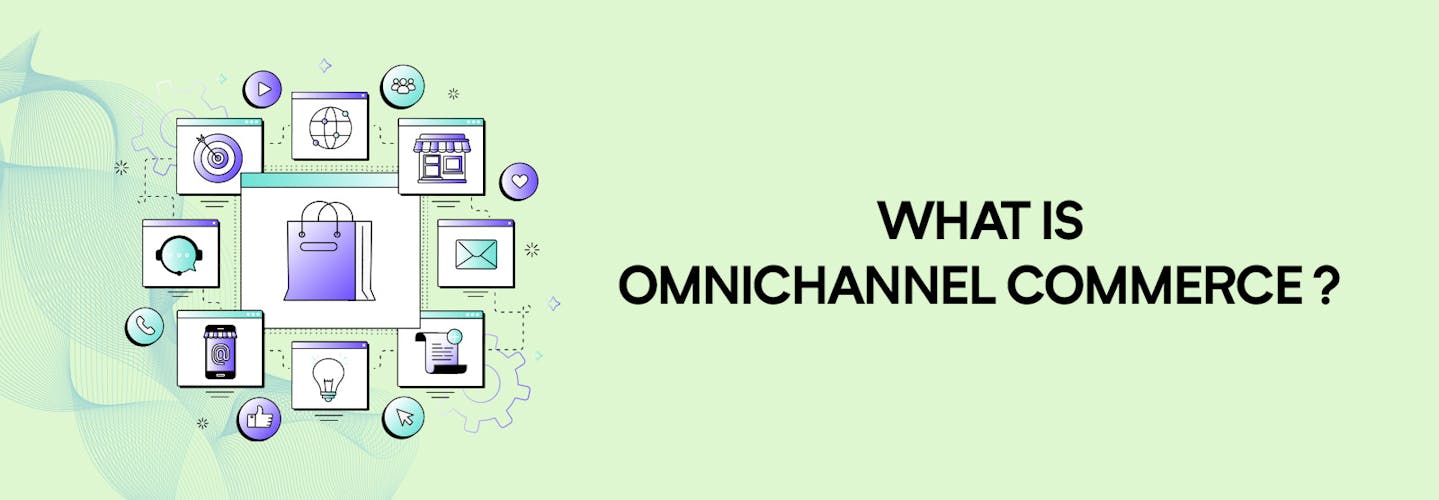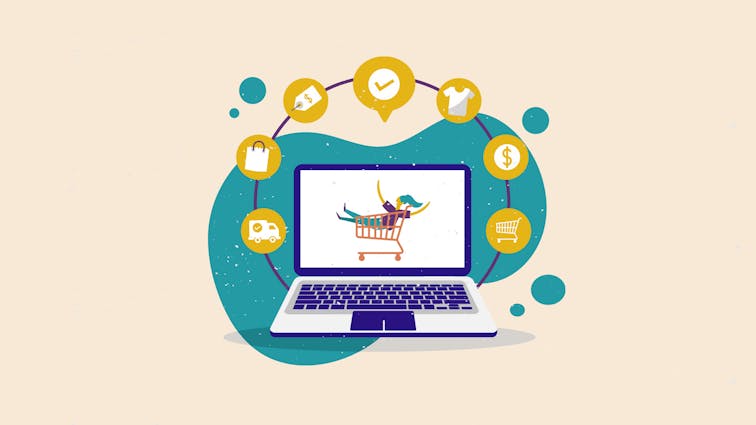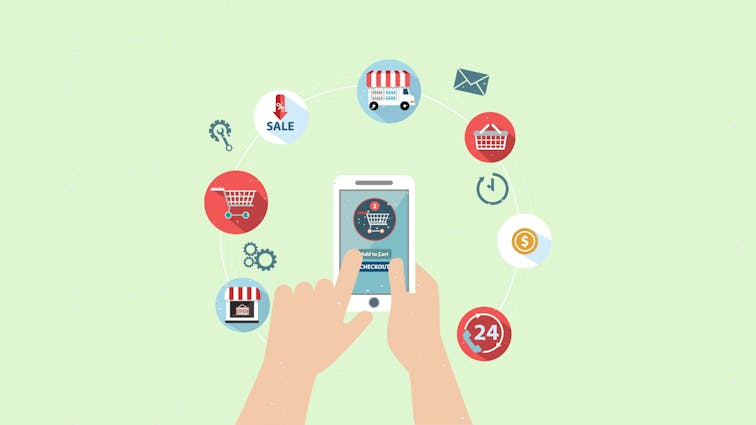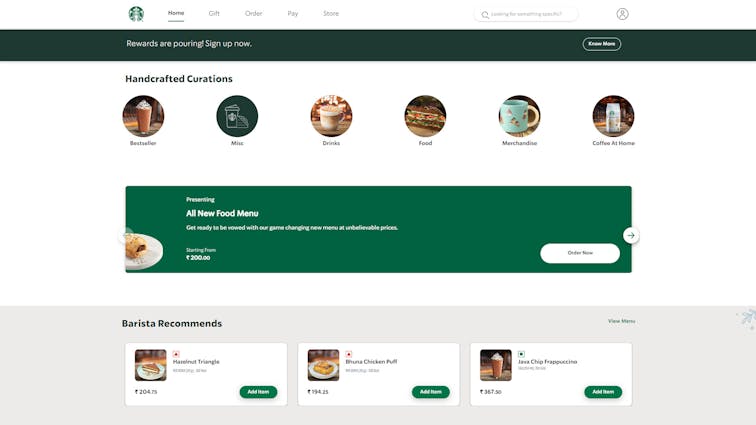
Ultimate Guide to Omnichannel Commerce: Debunking Misconceptions and Unveiling Benefits
You must have come across the term ‘omnichannel’ several times, whether in meetings, organisational webinars, or when compiling business marketing strategies. But what exactly does omnichannel commerce mean?
For some, the term is jargon; for many others, it has several meanings riddled with various misconceptions. Let’s understand what omnichannel commerce is all about, the kind of misconceptions that revolve around it, and how it can benefit your business.
What Does Omnichannel Commerce Mean?

Omnichannel commerce involves selling on multiple channels and providing a seamless customer experience whether they are shopping through a website on their smartphone, an app, their computer, or even if they approach your brick-and-mortar store.
It is a key selling approach that integrates multiple channels (both digital and in-store) to create a unified shopping experience with intelligent data at every touchpoint.
According to Harvard Business Review, 73% of customers use multiple channels during the purchase process. Further, the 2021 State of Commerce Experience Survey found that nearly half (44%) of B2C shoppers and 58% of B2B shoppers frequently research products online before going to a physical store.
Even existing customers will continue to research online, which clearly shows that customers will only make purchasing decisions from retailers when they have enough information available from a variety of sources to support their purchasing decisions.
A good omnichannel strategy concentrates on the holistic customer experience rather than the customer’s individual experience across multiple channels.
Omnichannel commerce provides an opportunity for your consumers to better understand your brand and products/services. The objective is to increase sales, build customer loyalty, and save money.
Misconceptions of Omnichannel Commerce:
Despite knowing what omnichannel means, several businesses are still confused about omnichannel selling and often consider omnichannel marketing and omnichannel commerce the same terms.
Both are different, and it is important to dispel the myths and misconceptions revolving around omnichannel commerce. Here are a few of them:
Misconception 1 Omnichannel commerce means offering the same kind of products and services on all channels.
Omnichannel commerce is not about offering the same products on multiple channels. Simply put, it is about reaching out to various customers and leads using multiple channels. The idea is to expand reach, not to market products.
Misconception 2 Omnichannel commerce is complex and complicated.
While it is not one of the easiest selling strategies that businesses can use, with practice and proper knowledge of the strategy, you can master your omnichannel commerce stream and gain benefits from it.
Misconception 3 Only big shopping giants can delve into omnichannel commerce.
Small and medium businesses feel that omnichannel commerce can only be taken up by bigger companies as they are supported by unlimited resources. This is false.
Companies of all sizes can pursue an omnichannel commerce strategy, so there’s no need to hesitate when considering omnichannel commerce implementation.
Misconception 4 Omnichannel commerce is tedious, expensive, and requires manpower.
Undoubtedly, if you start a new strategy whether for marketing or selling, it comes with a few costs, but in the case of omnichannel commerce, the investment outweighs the outcome in the long run.
You simply need to implement a cost-effective framework using the same manpower to support retailers.
Misconception 5 Omnichannel commerce is just a passing phase, a trend.
Omnichannel commerce isn’t a new strategy. It has been around for years, wherein businesses have used print media, television, and posters to sell their products across multiple channels.
Again, the objective was to spread brand awareness and reach the maximum number of consumers and leads. Omnichannel commerce is thus not a trend but a strategy that is here to stay.
Thanks to technology, you can spread your omnichannel strategy across a variety of channels, which offers massive scope to businesses to reach out to their consumers and leads on digital and offline channels.
Let the Aasaan app help you with your omnichannel efforts and take your business to your target audience using multiple channels.
Benefits of Omnichannel Commerce
Omnichannel commerce has the following key benefits:

1. Expand your Brand Reach
Omnichannel commerce is an opportunity to better understand your customers, increase sales, build customer loyalty, and save money.
It is one of the best strategies to generate leads, acquire more consumers by converting maximum leads into sales, and improve consumer loyalty
2. Improve Customer Satisfaction
According to a report, 9 out of 10 consumers expect businesses and brands to provide an omnichannel retail experience that offers seamless services across communication methods.
3. Increase the Number of Touchpoints
Omnichannel commerce helps your business increase its sales and ROI and can easily cover the costs of implementing it in the long run. According to a survey of 46,000 shoppers, omnichannel customers pay more than single-channel customers.
4. Promote Personalisation
Omnichannel commerce is all about personalisation, which is no longer a trend, but a mandate.
Providing shoppers with a personalised omnichannel experience is becoming increasingly important. That’s because 74% of online consumers feel frustrated when they see content on their website that isn’t related to their interests, and dissatisfied shoppers don’t buy.
Personalised omnichannel commerce is beneficial in the following ways:
- A strong relationship and connection with consumers and the target audience
- Gives customers access to multiple shopping opportunities
- Helps customers with more buying opportunities, making them more likely to spend more overall.
- Leveraging customer database information provides valuable insights about individual customers, which can be used to gain customer loyalty.
5. A Solid Integration of Omnichannel Commerce and Marketing
You also have the advantage of omnichannel marketing, as it provides customers with a consistent experience across all channels.
The perfect combination of omnichannel commerce and omnichannel marketing can help deliver an exceptional customer experience that retains your existing consumers, attracts leads, and keeps them coming back for more.
Best Practices for Implementing Omnichannel Commerce:
Implementing omnichannel commerce is not an easy task. However, there are a few best practices that businesses can follow to ensure success. In this section, we’ll discuss the top three best practices for implementing omnichannel commerce.
1. Understanding customer behavior:
Understanding customer behavior is crucial for the success of omnichannel commerce. To effectively cater to your customers, you must first understand their behavior.
Analyzing their shopping habits, purchase history, and preferences can help you create a personalized experience for them. This includes understanding the different channels that customers use to interact with your brand, and their expectations for each channel.
A comprehensive understanding of customer behavior can help you tailor your omnichannel strategy to meet the needs of your customers.
2. Integration of technology:
Integrating technology is another best practice for implementing omnichannel commerce. With the increasing use of mobile devices and social media, technology has become a key element in delivering an omnichannel experience.
By integrating technology, businesses can provide a seamless experience across different channels. This includes investing in technology such as point-of-sale systems, mobile applications, chatbots, and customer relationship management tools.
By integrating these tools, businesses can provide customers with real-time information, personalized recommendations, and a consistent experience across different channels.
3. Aligning internal operations:
Finally, aligning internal operations is critical for implementing omnichannel commerce. The success of omnichannel commerce requires businesses to break down internal silos and work together across different departments.
This includes aligning marketing, sales, and customer service teams to ensure a consistent customer experience. Additionally, businesses need to ensure that their supply chain and inventory management systems are integrated with their omnichannel strategy.
This ensures that customers can receive their products in a timely and efficient manner, regardless of the channel they choose to interact with.

Case Study #1: Starbucks
Starbucks is a prime example of a business that has successfully implemented an omnichannel commerce strategy. With over 30,000 stores worldwide, Starbucks has a complex retail operation that spans multiple channels.
However, the company has managed to seamlessly integrate its online and offline channels to create a truly omnichannel experience for its customers.
One of the key elements of Starbucks’ omnichannel strategy is its mobile app. The app allows customers to order and pay for their drinks in advance, eliminating the need to wait in line.
Additionally, the app offers rewards and loyalty programs that incentivize customers to return to Starbucks. These rewards and loyalty programs are integrated across all channels, allowing customers to earn points and redeem rewards regardless of whether they order in-store or online.
Starbucks has also invested heavily in its digital infrastructure, including its website and social media channels. The company uses social media to engage with customers and promote its products, while its website provides a seamless online ordering experience.
By integrating these channels, Starbucks has created a truly omnichannel experience that is tailored to the needs and preferences of its customers.
Overall, Starbucks’ omnichannel strategy is a great example of how businesses can successfully integrate multiple channels to create a seamless customer experience.
By focusing on the needs of its customers and leveraging technology to create a personalized experience, Starbucks has achieved success in the highly competitive coffee industry.
Conclusion:
Businesses must use omnichannel commerce to achieve higher uptime, drive more sales and traffic, and monitor all customer touchpoints.
Omnichannel marketing and commerce strategies continue to improve the customer experience and provide multiple channels to know about and purchase using their smartphones, the internet, or in-store.
With the aasaan app, we help you boost your omnichannel commerce so you can stay ahead of the curve. Build, launch, and scale your business the aasaan way.
FAQ:
1. How can businesses benefit from omnichannel commerce?
Businesses can benefit from omnichannel commerce in several ways. It helps them better understand their customers, increase sales, build customer loyalty, save money, improve customer satisfaction, increase the number of touchpoints, and promote personalization.
2. Is omnichannel commerce only for big businesses?
No, omnichannel commerce is not just for big businesses. Companies of all sizes can pursue an omnichannel commerce strategy and expand their reach across various channels. With proper knowledge of the strategy and practice, any business can master their omnichannel commerce stream and gain benefits from it.
3. What is the difference between omnichannel marketing and omnichannel commerce?
Omnichannel marketing is focused on promoting products and services across multiple channels to increase brand awareness and generate leads. On the other hand, omnichannel commerce is about selling across multiple channels and providing a seamless customer experience to create a unified shopping experience with intelligent data at every touchpoint.
4. How can businesses ensure a seamless customer experience across multiple channels in omnichannel commerce?
In omnichannel commerce, businesses can ensure a seamless customer experience across multiple channels by integrating all channels into a single platform, using intelligent data to understand customer behavior, and providing personalized and consistent communication across channels.
5. What technologies can businesses use to support their omnichannel commerce strategy?
There are various technologies that businesses can use to support their omnichannel commerce strategy, such as customer relationship management (CRM) software, inventory management systems, order management systems, and marketing automation tools.








